Even in 2025 — after using cameras as diverse as the Fujifilm X100VI, Ricoh GR III/IIIx, and systems from Nikon and OM System — the X-T5 still strikes the best balance I’ve found between performance and portability. It blends physical control dials with speed of use in a way that keeps me reaching for it whenever I want high-quality images without the weight or bulk of larger systems. It’s why it was highly featured in the best cameras for travel photography article that I wrote and one of the reasons why I shoot Fujifilm cameras in the Philippines. It even made it into the best mirrorless cameras article.
Affiliate Disclaimer
Some of the links in this article are affiliate links. If you make a purchase through them, I may earn a small commission at no extra cost to you. This helps support the site and allows me to keep creating honest, long-term reviews like this one. I only recommend gear I use myself and genuinely believe in.
TL;DR — Fujifilm X-T5 Long-Term Verdict
The Fujifilm X-T5 is a true all-rounder — a jack of all trades and master of none, except the shooting experience. It’s not the absolute best at autofocus, low-light, or speed compared to full-frame rivals, but it’s consistently good enough in every area to make it the camera I reach for most often.
What makes the X-T5 stand out is its flexibility. Paired with Fuji’s compact Fujicron f/2 primes, it becomes a small, discreet travel and family camera. Add the L-grip and professional f/1.2 or f/1.4 primes, and it transforms into a lightweight pro body capable of serious work. This modular feel means the X-T5 can be whatever you need it to be — a pocketable companion one day, a reliable workhorse the next.
Combined with Fuji’s refined control dials, excellent color and tonality, and a lens ecosystem that’s second to none in APS-C, the X-T5 remains one of the most enjoyable cameras I’ve ever used. If I had to keep only one camera, this would likely be the last man standing.
I placed my X-T5 preorder back in late 2022, having owned every previous X-T model at one point or another. That doesn’t mean I’ve always loved them all. When the X-T1 was released, I actually chose the Olympus OM-D E-M1 over it. The X-T2, by contrast, really clicked with me — I used it extensively and still look back on it as one of Fuji’s best. I bought the X-T3 but ended up returning it; while many rave about that camera, I personally preferred other options at the time. I did own the X-T4, but more often reached for my X-Pro3 for photography, as I felt the X-T4 leaned too heavily into being a hybrid camera rather than the stills-focused tool I wanted.

That history is exactly why the X-T5 caught my attention so quickly. It felt like a return to Fuji’s photographic roots: a smaller, more refined body, a renewed focus on stills rather than video, and the introduction of the new 40-megapixel sensor — the same one found in the X-H2, but without the video-centric body design I didn’t want. Just as important was the inclusion of the three-way tilt LCD screen, which for me marked a deliberate move back toward photographer-first usability, rather than a fully articulated screen aimed at hybrid creators. With the added promise of faster autofocus and in-body image stabilization, I didn’t hesitate to hit the preorder button.

This is not a quick impressions piece. I’ve now owned the X-T5 for over two years, and in that time it has been my main and most-used camera. For context, I’ve owned and sold the Sony A7 IV in the same period, and I currently use cameras across Micro Four Thirds, full-frame, and medium format systems. Yet despite that breadth of gear, the X-T5 has remained the camera I instinctively reach for most often — a telling measure of just how well it fits both my photography and my life. And if you’re curious about which glass really makes the most of it, I’ve put together my best Fujifilm X-T5 lenses guide with simple 1-, 2-, and 3-lens setups that work in the real world. I also have various lens comparisons on the site like the Fuji 18mm 1.4 vs 23mm 1.4 one here and reviews such as this review of the Fuji 56mm 1.2WR lens.
Jump to Section
Fujifilm X-T5 — Key Specifications
Design and Handling
The size of the X-T5 is one of the main reasons it works so well as my primary camera. Paired with one of Fuji’s compact f/2 primes, it feels like an addition to a trip rather than something that makes the trip revolve around photography. That’s important: it means I regularly bring it along on family days out and travel, where larger systems might stay at home. Yet once I add my SmallRig L grip extension and mount one of the premium f/1.2 or f/1.4 primes, the camera transforms into a lightweight pro body that can handle anything I throw at it. See the best accessories for the Fuji X-T5 here. Unfortunately Fuji don’t offer an official battery grip for the X-T5 and there are no connectors at the bottom of the camera, so the best option that I have found is the Smallrig Grip. The X-T5 is lighter than my OM-1 Mark II and substantially lighter than the Nikon Z6 III, and the difference is immediately noticeable. Just this morning I was shooting with the Nikon Z8 and 50mm f/1.8, then picked up the X-T5 straight after. It felt so featherweight that I actually checked the battery compartment to see if it was empty — it wasn’t. Even after all this time, the X-T5 continues to surprise and delight me. Only last night I was shooting for my Fuji XF 18mm f/1.4WR lens review and was blown away with the results.
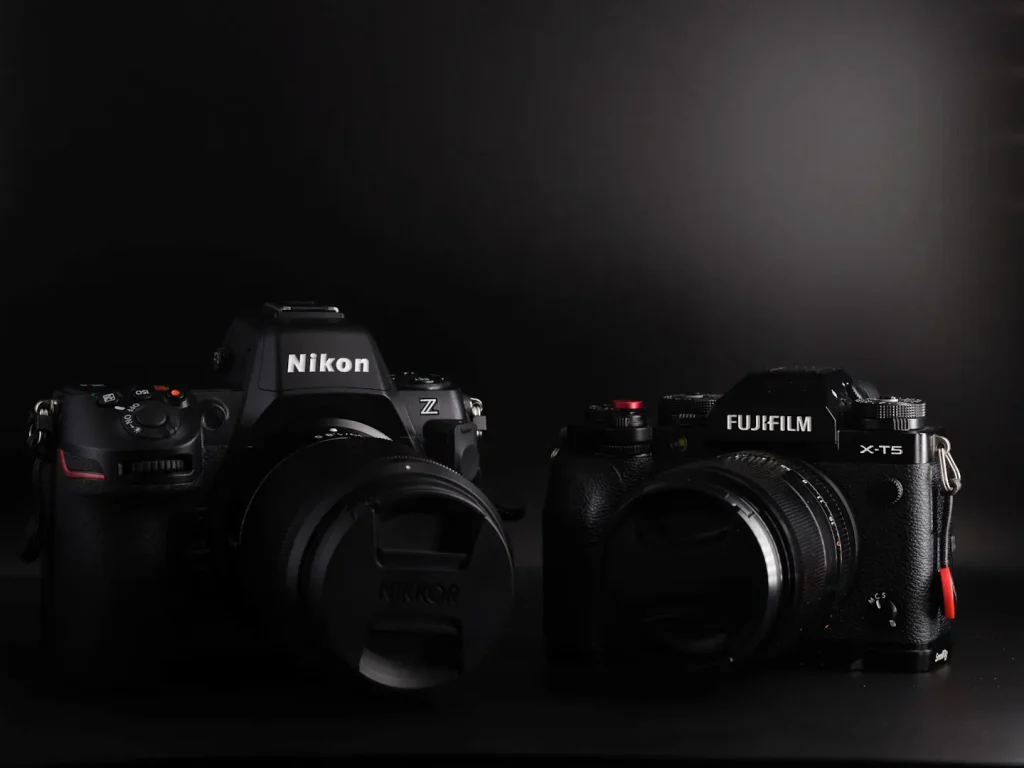
Everyone talks about Fuji’s physical control dials, and for the type of shooting I do — travel, family, documentary — I genuinely appreciate them. The X-T5 retains the physical ISO and shutter speed dials with the drive dial sat on a separate ring below the ISO dial. It is not lockable and can very occassionally get moved. A push to move mechanism would be a small and subtle improvement here. Below the shutter speed dial is a separate switch to move between stills and movie mode. That’s about as much information as i’ll go into on the video features of the X-T5 in this review. The ISO and shutter dials have proper locking mechanisms that can be clicked in or out, which I prefer to the push-and-hold style used by some other brands. With 1/3-stop increments on the ISO dial and full-stop increments on the shutter speed dial, I can quickly set exposure and see my settings at a glance. Let’s be honest though: they also look fantastic, and they deliver a shooting experience that feels different from the PASM dials found on most modern mirrorless cameras. That’s part of the X-T5’s charm. If absolute efficiency and speed are your only concern, PASM is quicker in my experience. But for me, the tactile control dials add real value to the experience.
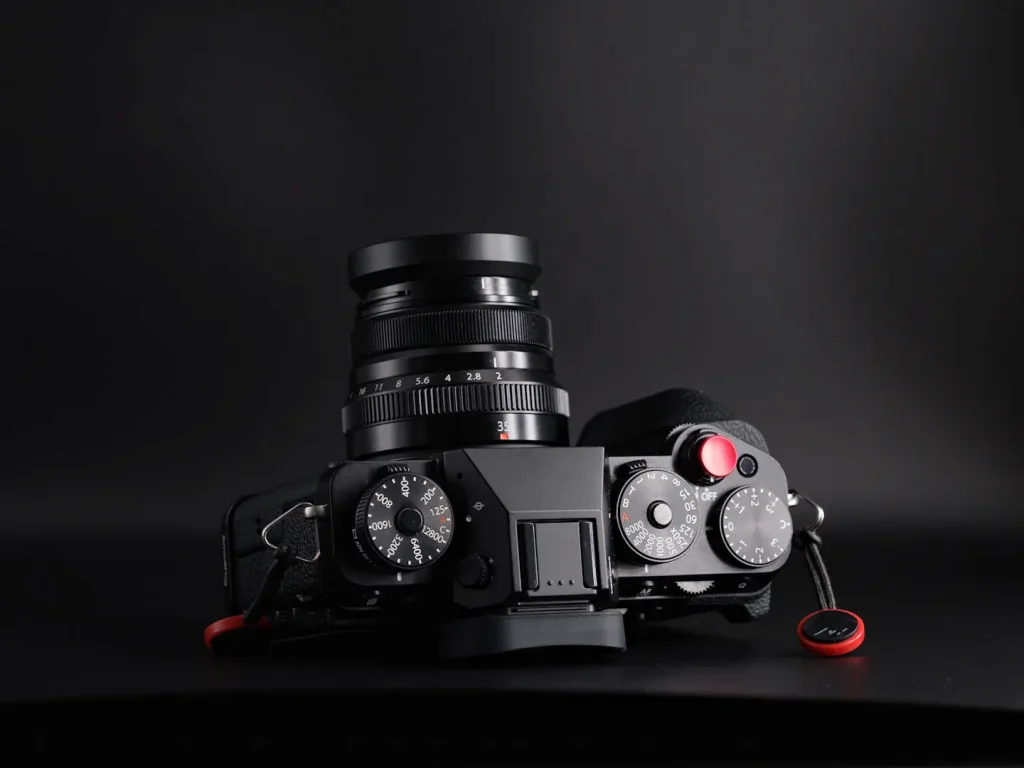
After more than two years of heavy use, I’ve found the build quality excellent. The X-T5 may no longer be made in Japan, but I’ve noticed no drop in quality compared to previous generations. It feels light in the hand but avoids the hollow feeling that put me off the X-T1 years ago — instead it’s dense and solid. The ISO and shutter speed dials are fairly easy to move, but thanks to the locks it’s a non-issue. The shutter button doesn’t protrude much, which takes getting used to, but a SmallRig soft shutter release has lived on mine since early on and solved that instantly. The exposure compensation dial, though not lockable, is stiffer and recessed enough to avoid frequent knocks, though I do double-check it when pulling the camera out of a bag. The memory card door is secured with a positive latch, and the port covers are hinged doors rather than flimsy rubber flaps — a small but meaningful detail. Buttons protrude just enough to find by feel, and overall the camera feels well thought-out and built to last.

The EVF is the same 3.69M-dot OLED unit from the X-T4 but with a slightly improved 0.8x magnification. I can’t tell any difference. Yes, competitors like OM System and Nikon have moved on to higher resolutions, but I still find the X-T5’s viewfinder sharp and clear enough for my needs, including manual focus. There is a little graininess in very low light but it’s acceptable. If you want a better viewfinder then you will have to move up to the X-H2 and X-H2s. A few years ago this EVF was considered one of the best, and while the bar has been raised, that doesn’t suddenly make it bad.
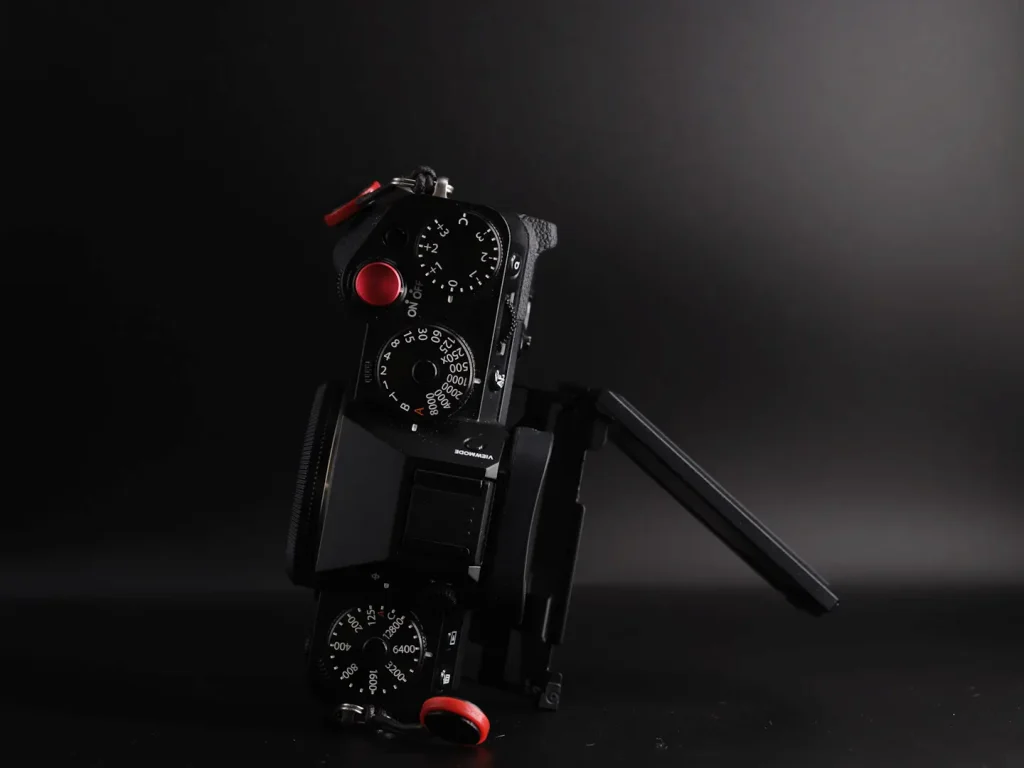
The rear LCD is bright and crisp, but the real story is the return of the three-way tilt screen, replacing the fully articulating version from the X-T4. For stills shooters, this is a win. The tilt design allows discreet hip-level shots, easy high- and low-angle work, and flexibility in portrait orientation, all without the awkwardness of a side-hinged screen. For me, it’s the perfect balance of versatility and photography-first usability.
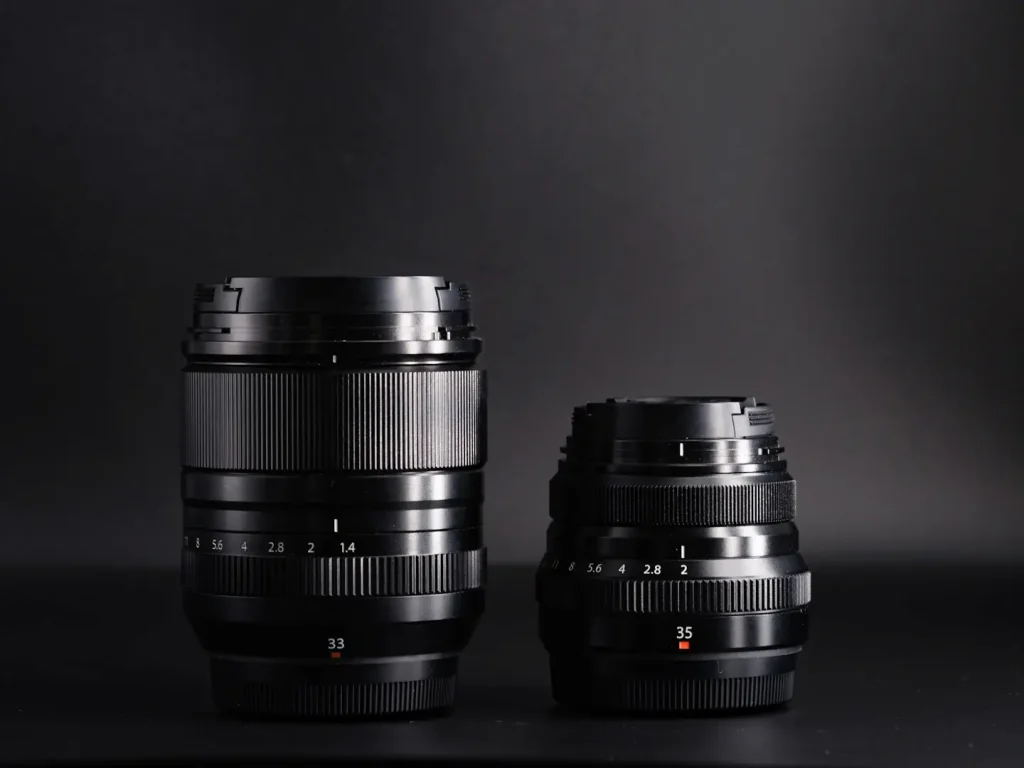
Perhaps the strongest point of the X-T5 is balance. With the small “Fujicron” primes (23mm, 35mm, 50mm f/2), it feels like a stealthy little powerhouse — light, discreet, and capable. Add the premium primes or small zooms, and with the L-grip it turns into an all-day comfortable setup that feels at home in professional use. Even without the grip, it’s fine with heavier lenses, but the extra depth makes a noticeable difference over long shooting days. In many ways the X-T5 feels modular: a compact, travel-ready body when stripped down, or a flexible workhorse with just a couple of thoughtful accessories. Combined with the APS-C format — offering slightly better image quality than Micro Four Thirds while keeping weight below a full-frame setup — it hits a sweet spot that few other systems manage.
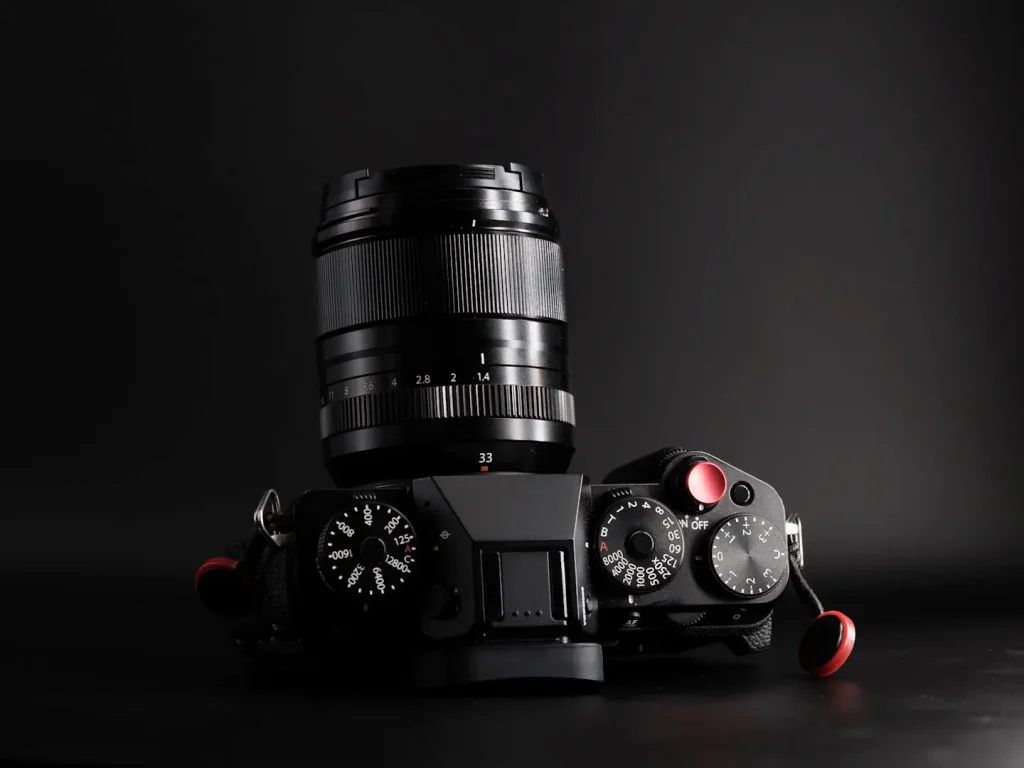
Image Quality
A headline upgrade with the X-T5 is its new X-Trans 5 processor and 40MP APS-C sensor. On paper, the jump from the older 26MP sensors is one of the most significant reasons to consider upgrading. But does it really make a difference in practice?
Here’s my honest take, as someone who owns and prints large on a 44″ Canon Pro 4100 printer. The extra resolution does give more detail and flexibility. It allows more cropping headroom while still retaining enough quality to make a meaningful difference. Personally, I try to get my framing right in-camera and don’t crop heavily, but for those who do, the X-T5 is a real step up.
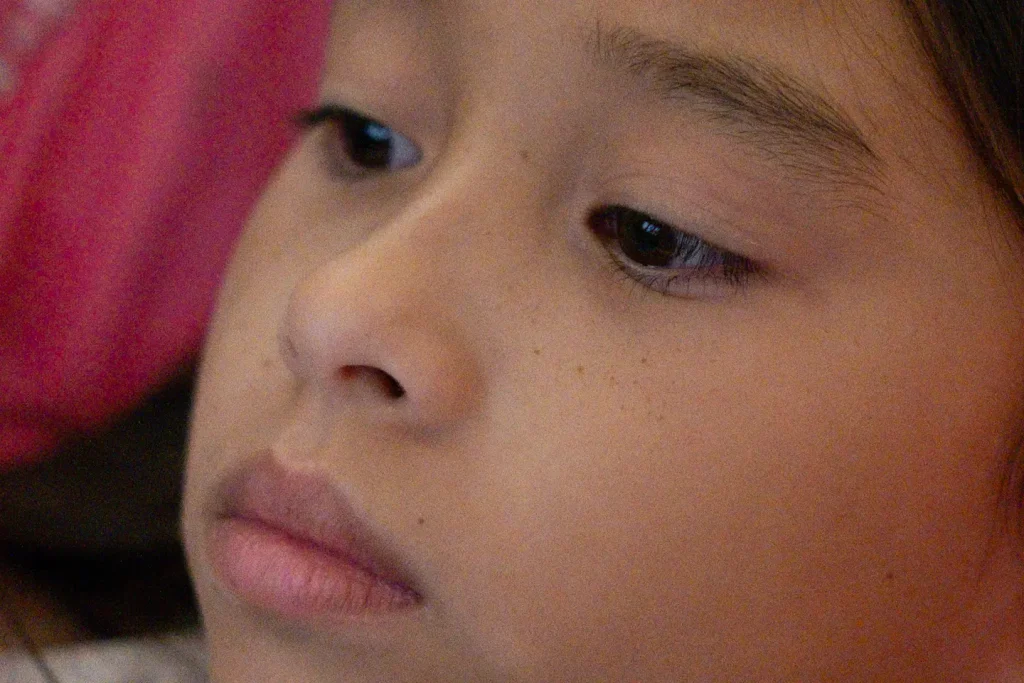

What impressed me even more, though, is that this increase in resolution hasn’t come at the cost of high ISO performance in any meaningful way. I’ve seen plenty of complaints online about the X-T5’s low-light results — and I’ve even had readers comment on it here — but in my real-world use, the camera can produce printable results up to ISO 12,800. ISO 6400 looks very good, and ISO 3200 is so clean that it’s not even a question mark anymore. Do I think 40MP is essential or worth upgrading for on its own? Absolutely not. I’d have been perfectly happy with 26MP, but I also won’t complain about the excellent quality this new sensor delivers.
Before / After (hover or tap)


Dynamic range is solid, if not class-leading. Compared to my GFX100S and Nikon Z-series cameras, the X-T5 falls a little short, but unless your exposure is three or more stops off, there’s plenty of room to recover shadows without excessive noise, and enough highlight recovery to cover most situations.
For landscape shooters, bracketing is still the best solution when the scene demands more range. Where the X-T5 shines for me is in the tonality of its files. Compared to something like my OM-1 Mark II, the images from the X-T5 look less digital, less clinical. They’re sharp and clean, but they have a quality that feels less sterile and more natural. The color and tonal rendering is among the best of any camera I’ve used, rivaled only by the GFX and Nikon Z systems, which deliver a slightly different but equally appealing look.
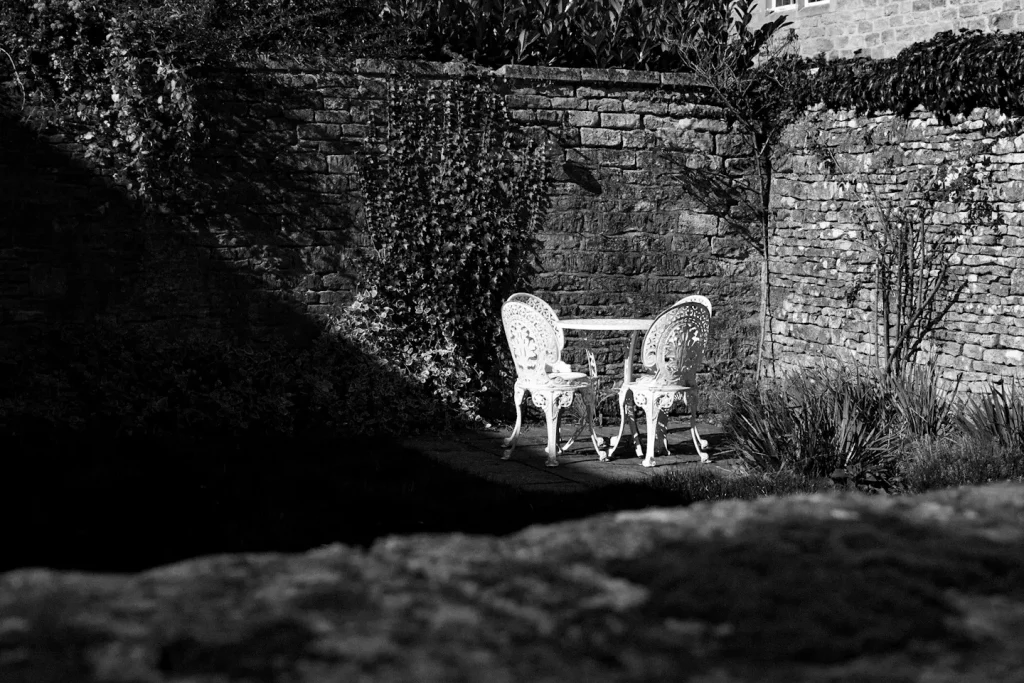
Fuji’s JPEG engine is famously strong, and early on I shot a lot of RAW + JPEG, often finding little reason to improve on the straight-out-of-camera files. The X-T5 includes Reala Ace which is a nice film simulation but after an initial play with it, I’ve stuck with my standard Classic Chrome for most shots. Over time, I’ve gone back to shooting mostly RAW for the flexibility of future editing. Lightroom now handles X-Trans files well, and with the built-in film simulations, masking tools, and white balance controls, I get the best of both worlds.
After two years of use, I’ve never once felt the image quality of the X-T5 held me back. Like any format, it comes with its compromises — image quality vs speed vs size — but the X-T5 finds a balance that works exceptionally well. In good light, paired with a quality lens, it can easily produce professional-grade images. In poor light, it won’t match full-frame options, but with a fast prime it still holds its own.
Autofocus Performance
Let’s get one thing straight right away: I don’t shoot sports or wildlife, and I don’t spend time running back and forth in front of cameras trying to force autofocus systems to fail. I’ve never once set up a test of someone sprinting toward me in zigzags as if I were sighting them through a rifle scope. That’s just not how I use a camera, and it’s not how I evaluate them.

Download My Fuji X-T5 Setup File (Free)
The exact settings I use for everyday shooting — autofocus, custom modes, and usability tweaks — saved as a single file you can load in under a minute.
How to load: Fuji X-App → Camera Settings → Import/Export → Import.
What I do shoot is far more typical of how most people will use the X-T5. I photograph my family — from my youngest daughter, Isobelle, now 13 months old, to her older sister and cousins ranging from nine through to their teenage years. I photograph people on the street, street dogs, everyday travel moments, and anything else that naturally comes up when I’m out in the world. In short, I don’t shoot to find fault with the autofocus — I shoot to see how well the camera performs in the situations that matter to me.

With that context in mind — and having also spent time with the Sony A7 IV, OM System OM-1 Mark II, Nikon Z8, and others — here’s how I’ve found the Fuji X-T5’s autofocus performance. In a word: stellar. I know this goes against the grain of what you often hear on YouTube, but after two years of daily use with a wide variety of lenses and in all kinds of conditions, that’s been my experience. My camera is currently on firmware 4.31 and I have upgraded my camera through the Fuji X-App regularly throughout the two years I have owned it and never had an issue, so I can only assume I am either very lucky or the people who have had issues have been unlucky. At no point has my X-T5 suddenly become junk because of a firmware update.

There is a small learning curve to getting the best out of the Fuji AF system, but once you know how to set it up properly, it’s consistent and reliable. To make that easier, I’ve made my X-T5 setup file available for free download here. Personally, I shoot the majority of the time in C-AF with Zone AF selected, adjusting the box size depending on the subject. Set up this way, the autofocus is confident and reassuringly accurate. With Eye AF enabled, it will pick up faces and then lock onto eyes quickly, tracking them reliably as the subject moves. The only time I’ve noticed hesitation is when the closer eye is partially obscured by hair or another element, which can cause the camera to momentarily jump to the other eye. A small adjustment in shooting position fixes it, and you can also specify eye preference in the menus or assign a custom button to force a switch if you really want to.
For real-world subjects — kids, travel, street photography — the X-T5 keeps up just about as well as anything I’ve used, with the exception of Sony’s A7 IV, which I would still place out in front of every other brand when it comes to pure autofocus performance. But that doesn’t make the Fuji lacking. It’s a confident, dependable system that has never once held me back in the kinds of shooting I care about. If I want to accurately focus on one particular area then I quickly switch in to single point AF mode via the Q menu. Will it track fast moving subjects as well as some other cameras, no. But will it let you down for general photography, in my experience, equally, it’s a no.

The X-T5 also includes various subject detection modes, covering animals, birds, cars, motorbikes/bikes, airplanes, and trains. Of these, I’ve casually used the animal option and found it to be just as reliable as human detection. Even with my black dog, the system quickly picked up the shape, face, and eyes and tracked them confidently.
Fuji also gives you the option of AF+MF, which allows you to fine-tune focus manually while the shutter button is half-pressed and autofocus is active. It’s a subtle feature but genuinely useful in tricky situations where you want autofocus to do the heavy lifting but still need that last bit of control. On top of this, the camera provides a solid set of manual focus aids — including peaking, a digital split-image, and a digital microprism. I find focus peaking works particularly well, and with the ability to change color and strength (red, white, blue, low, high), it’s easy to tailor to personal preference or the subject you’re shooting.

You can also interlock spot metering with the active AF point, which I find especially helpful for portraits to quickly get accurate exposure where it matters most. For those who prefer zone focusing, Fuji even lets you change the depth-of-field scale between a “pixel level” calculation or a more traditional “film format basis,” which is a thoughtful touch.
Finally, the X-T5 offers six AF-C custom presets, designed to fine-tune continuous AF behaviour for different types of movement, with one slot fully customizable. This, to me, highlights something Fuji consistently gets right: their cameras are logical, customisable, and flexible in ways that actually matter when you’re using them day in and day out. Once a camera reaches the point of being “good enough” at pure AF speed and accuracy, it’s these quality-of-life refinements — and Fuji’s willingness to give photographers control — that make the difference in long-term use.
A Note on Video
The X-T5 is a stills-first camera, and that’s exactly how I use it. Yes, on paper it has impressive video specs — 6.2K recording, 4K/60p, F-Log2, and even RAW output over HDMI — but I won’t be covering those here. I’m a stills photographer, and that’s the perspective of this review.
If video is your priority, there are better places to go for detailed testing, and within Fuji’s own lineup the X-H2 and X-H2S are far better choices for serious filmmakers. For me, the X-T5’s strength lies in its stills performance, and that’s what I’ll focus on in this review.
I have shot a little bit of video on the X-T5 and from my perspective, it looked great for casual use.
Battery Life & Usability
Battery life on the X-T5 has been consistently solid thanks to the NP-W235. In my real-world use, one battery is usually enough to last through most of a full day’s shooting — a sunrise session (an hour either side), casual shooting during the day, and then a sunset session. Before the evening, I’ll usually swap to a fresh battery, not because the first one is dead, but because my cautious side prefers to change when it dips to around 10–20%. On trips I carry two or three spares, though on any individual shoot I normally just keep one spare with me.
For storage, I use 256GB SanDisk Extreme Pro 170/200 MB/s cards , which provide well over 5,000 shots when shooting lossless compressed RAW. For normal use, they’re fast and reliable, but if you shoot a lot of bursts you’ll eventually hit the limitations of SD and the X-T5’s buffer. In my own tests, shooting RAW at 10 fps, the buffer filled after about three seconds, at which point the camera slowed to ~2 fps until I stopped. Clearing that buffer took about 12 seconds. At 15 fps, the slowdown came after just two seconds. For short bursts this is manageable, but if continuous shooting is your primary use case, the CFexpress cards used in the X-H2 and X-H2S will be a much better fit. I generally use my cards in sequential mode for the extra capacity, but for critical, non-repeatable shoots I’ll switch to backup mode. You also have the option to split RAW and JPEG across slots if that suits your workflow.
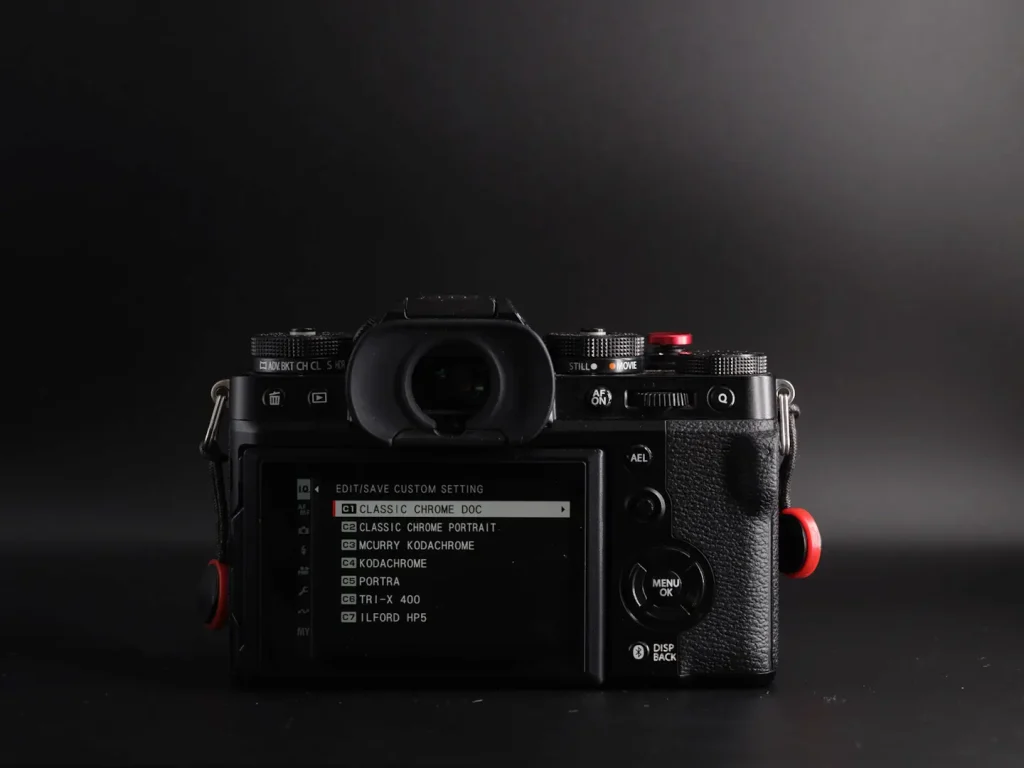
Usability is, for me, where the X-T5 really shines. Once the camera is set up, I rarely need to dive into menus beyond the options I’ve assigned to the Quick Menu. You can customise two dedicated function buttons, as well as the AF-On and AEL buttons, plus the D-pad, giving you plenty of flexibility to set it up however feels natural. You can also customise screens swipes for various functions but in all honesty, I never use this as everything I need is covered with Fn buttons. On top of that, Fuji allows you to create and save up to seven custom modes, covering all major settings, and crucially you can rename them. That might sound like a small thing, but it makes a big difference in long-term use. On other brands I’ve lost track of whether a particular custom slot was set for portrait, landscape, or something else. On the X-T5, simple touches like being able to rename custom modes mean that once it’s set up the way I want, I can forget about it and just shoot.
Charging is equally flexible. The camera supports USB-C charging, which is great in a pinch — I’ve topped it up in my bag using a power bank more than once — though day-to-day I prefer a dedicated charger. I don’t use Fuji’s official dual charger, which is overpriced in my view, but instead rely on third-party options from SmallRig and K&F Concepts . For the cost of Fuji’s charger, I can pick up three or four dual chargers plus multiple batteries, and in my experience they’ve been reliable.
Finally, I’ve seen many complaints online about the Fuji X-App, but in my experience it’s probably the best of any camera brand I’ve used. I’ve never had connection issues, and unlike OM System, I can sync more than one camera. Unlike Nikon’s app, which gave me pairing headaches during setup, the Fuji app has been seamless. It allows you to download and install firmware updates directly — something that always makes me nervous with OM System after once bricking a two-week-old E-M1X. With Fuji, updates have been smooth and trouble-free. The app also lets you add GPS data to your photos and control the camera remotely if needed (though I rarely use that feature). For me, the most important thing is reliability, and the X-App delivers.
Who Is the Fujifilm X-T5 For?
The Fujifilm X-T5 is best suited for photographers who want one of the most versatile, value-packed cameras available today. It balances portability, image quality, and shooting experience better than almost anything else on the market.
- Ideal for: general photography, travel, family, and everyday shooting
- Perfect if you want: a stills-first camera that can be discreet with small primes or pro-ready with Fuji’s premium f/1.2 and f/1.4 lenses
- Great value: probably the best balance of price, performance, and shooting experience in 2025
Who the Fujifilm X-T5 Is Not For
The X-T5 covers a huge range of needs, but there are a few photographers who may be better served by something else.
- Sports or wildlife shooters: The buffer and SD cards can bottleneck at long bursts — the X-H2S with its stacked sensor and CFexpress slot is the better fit.
- Dedicated filmmakers: The X-T5’s video specs are strong, but it’s still a stills-first design. The X-H2 or X-H2S offer better thermal handling and workflow options.
- Extreme low-light specialists: If you constantly push ISO beyond 12 800 or demand full-frame dynamic range, the Nikon Z6 III or Sony A7 IV will go further.
- Those who prefer deep grips and modern PASM controls: The X-T5’s traditional dials may feel slower if you’re used to DSLR-style ergonomics.
Where to Buy the Fujifilm X-T5
If you’ve found this review helpful and are considering picking up the X-T5, you can support this site by purchasing through the affiliate link below. It won’t cost you anything extra, but it helps me keep creating in-depth, long-term reviews like this one.
Check Price on AmazonConclusion
My overall assessment of the Fujifilm X-T5 is that it’s a jack of all trades and a master of none — except when it comes to the shooting experience. And that, for me, is what sets it apart.
Compared to the Nikon Zf, Fuji’s implementation of physical control dials feels more mature and refined. The autofocus isn’t as good as the Sony A7 IV, but it’s good enough for the way most photographers will use it. Low-light performance doesn’t quite match the Nikon Z6 III, but again, in real-world shooting it’s more than capable. It doesn’t have the sheer speed of the Nikon Z8, but for general photography, the X-T5 is more than fast enough.
It also lacks the advanced computational modes, extreme weather sealing, and industry-leading IBIS of the OM System OM-1 Mark II. But the X-T5 counters with pixel shift, Fuji’s excellent film simulations, and enough weather resistance that I’ve never had an issue shooting in the rain. It can’t match the sheer detail and print size of Fujifilm’s GFX medium format system, but it will comfortably produce gallery-quality 30×20″ prints. It’s not as compact as the X100VI, but paired with Fuji’s “Fujicron” lenses it remains discreet enough for travel and street use.
The point is that the X-T5 may not be the absolute best at any one thing, but it’s good enough across the board — and in combination with its size, lens ecosystem, and handling, that makes it a uniquely compelling camera. If you held a gun to my head today and told me to get rid of all my cameras except one, the X-T5 would very likely be the last man standing.
Fujifilm X-T5 Pros & Cons
Pros
- Flexible & modular: discreet with compact f/2 primes, professional with f/1.2–f/1.4 primes + grip
- Refined physical control dials with useful locks
- Excellent color and tonality; film simulations add creative options
- Solid build quality, weather sealing, and reliable usability over two years
- Consistently good autofocus for family, travel, and street use
- 40MP sensor delivers detail and cropping headroom without major ISO penalty
- Strong lens ecosystem — arguably the best in APS-C
- USB-C charging and a surprisingly reliable Fuji X-App
Cons
- Autofocus still not at Sony level for sports or extreme tracking
- Low light performance behind full-frame rivals like Nikon Z6 III
- Buffer and burst rate limited by SD cards — not ideal for action shooters
- EVF feels dated compared to newer high-res finders
- Not as compact as the X100VI for travel
- Official Fuji accessories (chargers, batteries) overpriced compared to reliable third-party options
Fujifilm X-T5 FAQ
Is the Fujifilm X-T5 worth it in 2025?
Yes. Even in 2025 the X-T5 remains one of the most flexible cameras you can buy. It isn’t the very best at autofocus, low-light, or burst speed compared to full-frame rivals, but it’s strong across the board and excels in handling, color, and Fuji’s lens ecosystem. For stills-focused photographers, it’s one of the most enjoyable cameras on the market.
Does the Fujifilm X-T5 have good autofocus?
In my experience, yes. It’s consistently accurate for family, travel, and street photography. Eye AF works well for humans and even animals, though it isn’t as advanced as Sony’s A7 IV for fast sports or erratic action. With proper setup, it’s dependable and quick.
How is the low-light performance of the X-T5?
It’s not at full-frame levels like the Nikon Z6 III, but it’s still very capable. ISO 3200 and 6400 look excellent, and printable results are possible at ISO 12 800. Paired with a fast prime, the X-T5 handles most low-light work with ease.
Is the Fujifilm X-T5 good for video?
It offers impressive specs on paper — 6.2K/30p, 4K/60p, F-Log2, and RAW output — but it’s designed primarily for stills. For dedicated filmmakers, the X-H2 or X-H2S are better options. The X-T5 excels as a photographer’s camera first and foremost.
What lenses pair best with the X-T5?
The beauty of the X-T5 is flexibility. With compact f/2 “Fujicron” primes (23 mm, 35 mm, 50 mm) it becomes a discreet travel and street body. Add the premium f/1.2 or f/1.4 primes (like the 33 mm f/1.4 or 56 mm f/1.2 WR) and it turns into a lightweight professional setup. Fuji’s APS-C lens lineup is one of the best available.
How effective is IBIS on the X-T5?
With primes like the 23 mm f/1.4 WR or 33 mm f/1.4 WR I can comfortably hand-hold 1/5 – 1/10 second exposures for static scenes. It won’t freeze moving subjects, but it gives roughly 6 stops of real-world advantage — ideal for low-light travel and handheld landscape work.
What’s the difference between the X-T5 and X-H2?
They share the same 40 MP sensor and image quality. The X-T5 is smaller, lighter, and uses Fuji’s classic control dials; it’s aimed at stills photographers. The X-H2 adds a larger body, CFexpress slot, bigger EVF, and better heat management for hybrid or studio use.
Is the Fujifilm X-T5 still a good choice for beginners?
Yes — if you value manual dials and learning fundamentals. It’s intuitive once you understand the controls, and you can start simple in Auto mode or Aperture priority. The same camera can grow with you from casual travel shots to serious photographic work.


at no doubt the XT5 is the good camera, people often criticize the auto focus is very bad, but for me is really no problem because I am not the movie maker, I enjoy the life shooting with XT5, especially I fall into the Fujifilm decipe group, the combination of such beautiful pictures that created by Fuji colors. That’ great!
Thanks for commenting. It good to hear that you enjoy your XT5.